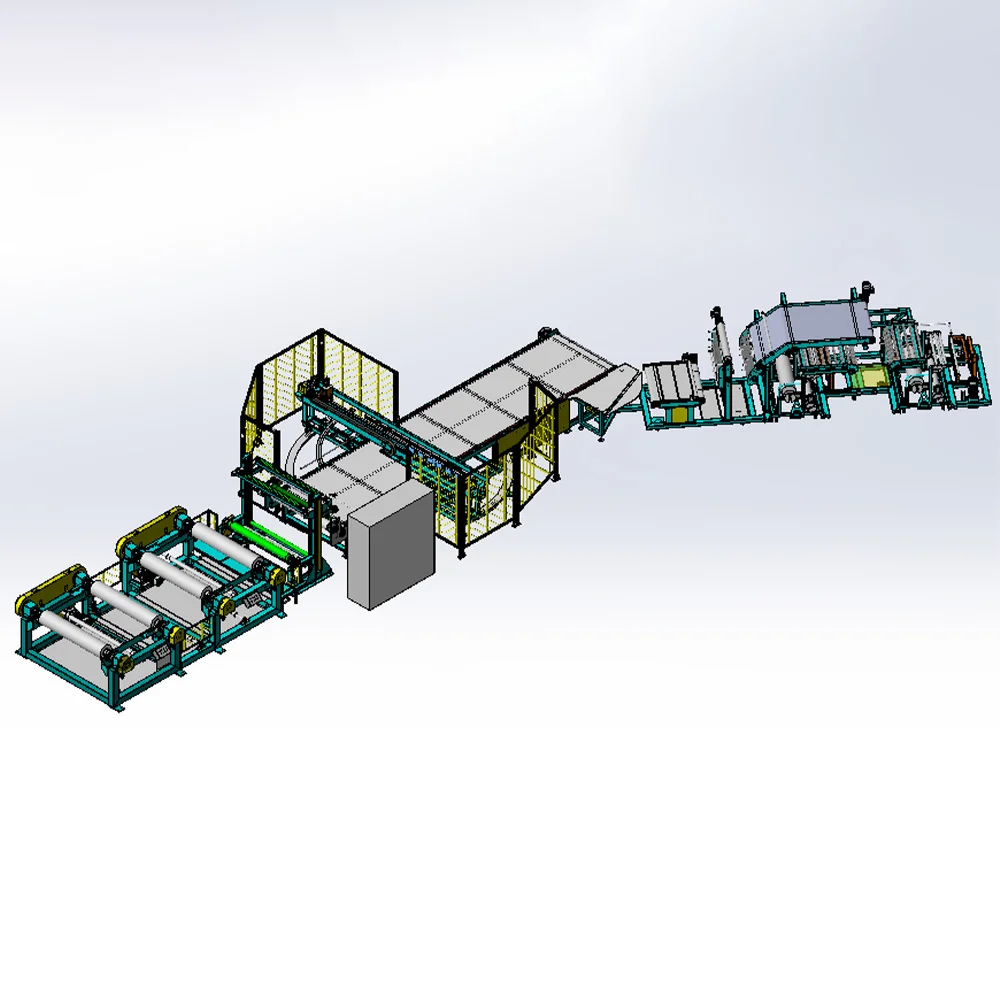In the field of tire manufacturing, precision, efficiency and material optimization are crucial. Among many key equipment, bias tire cutting machine plays an indispensable role, especially in the production of bias tires. In this blog post, SONIWELL, as a high performance tire manufacturing equipment exporter, will share the advantages of bias cutting machine for tire manufacturing.
Bias Cutting Machine for Tire Manufacturing Advantages
1. High Cutting Precision and Consistency
One of the most compelling advantages of bias cutting machines is their ability to deliver highly precise and consistent cuts. In bias-ply tire construction, fabric layers are placed at an angle - typically between 30 to 40 degrees - relative to the tire's centerline. Maintaining exact cut angles across all fabric plies is critical for ensuring tire uniformity, mechanical performance, and longevity.
Advanced bias cutting machines are equipped with programmable logic controllers (PLCs), servo motors, and laser guidance systems. These technologies allow for micron-level accuracy in both the angle and length of the cuts. Precision cutting reduces the likelihood of ply misalignment during tire building, which could otherwise lead to defects such as bulges, irregular wear, or blowouts. Consistency in cutting also facilitates easier downstream processing and better ply lay-up quality.
2. Enhanced Production Speed and Efficiency
Tire manufacturers operate under intense pressure to meet production quotas while maintaining quality standards. Bias cutting machines dramatically increase production speed by automating the cutting process, minimizing manual intervention, and reducing cycle times.
Modern machines feature continuous feed systems, automatic tension controls, and synchronized cutting heads, allowing for high throughput rates without compromising cut quality. Integrated batching and stacking units further enhance efficiency by organizing cut plies into ready-to-use bundles, thus optimizing material flow to subsequent stages such as tire building and vulcanization.
By improving operational speed and efficiency, bias cutting machines help manufacturers reduce labor costs, lower energy consumption per tire, and increase overall plant productivity.
3. Material Utilization and Waste Reduction
In tire manufacturing, material costs - particularly those related to reinforcement fabrics such as nylon, polyester, and aramid - constitute a significant portion of overall expenses. Bias cutting machines contribute substantially to material optimization through precise nesting and cutting strategies.
Advanced cutting software can optimize the layout of cuts on the fabric roll, minimizing off-cuts and selvage waste. Some systems employ algorithms to adjust cutting sequences dynamically based on fabric dimensions and tire specifications, achieving up to 10-15% improvement in material yield compared to manual or semi-automatic cutting processes.
Reduced waste not only lowers material costs but also supports sustainability initiatives by decreasing the environmental footprint of the manufacturing process.

4. Superior Fabric Handling and Tension Control
Maintaining correct tension during fabric cutting is vital to prevent distortions, stretching, or tearing, which can compromise the structural integrity of the final tire. Bias cutting machines are engineered with precise tension control systems that regulate fabric feed rate and tension dynamically throughout the cutting operation.
These machines often feature de-curling devices, automatic edge alignment systems, and adaptive fabric guides to ensure that the material remains flat and properly oriented. Proper handling reduces defects related to fabric distortion and enhances the mechanical bonding between plies during tire assembly.
Effective tension management also means that lighter and more advanced materials can be processed without damage, enabling manufacturers to explore innovative designs and material combinations for next-generation tires.
5. Versatility and Customization
Today' s bias cutting machines are not limited to a single type of fabric or product line. Leading designs offer multi-material capability, enabling the cutting of various reinforcement fabrics with different thicknesses, coatings, and tensile properties.
In addition, programmable settings allow for rapid adjustment of parameters such as cut angle, width, and length, supporting a broad range of tire sizes and specifications. This versatility is crucial in industries where tire diversity is high, where tires must be tailored to highly specific performance and regulatory requirements.
Customization options, such as multi-head cutting systems, modular designs, and integration with factory-wide manufacturing execution systems (MES), make bias cutting machines adaptable to different production volumes and workflows.
6. Reduced Downtime and Maintenance Requirements
Modern bias cutting machines are designed with robust construction and high-quality components, minimizing the frequency and severity of mechanical failures. Predictive maintenance features, such as sensor-driven condition monitoring and automated diagnostic reporting, further contribute to high machine uptime.
Quick-change tooling and easy access panels reduce the time required for maintenance activities, while standardized parts simplify inventory management for spare components. As a result, manufacturers benefit from lower maintenance costs, reduced downtime, and higher overall equipment effectiveness (OEE).
Moreover, many new machines incorporate remote monitoring and support capabilities, allowing technicians to troubleshoot and update machine software without physical intervention, thus speeding up recovery from unexpected issues.
7. Improved Worker Safety and Ergonomics
Worker safety is a paramount concern in tire manufacturing plants, where manual handling of heavy and large fabric rolls poses significant risks. Bias cutting machines improve worker safety and ergonomics by automating the material handling and cutting processes.
Automated loading systems, protective guarding, emergency stop systems, and real-time monitoring sensors ensure that operators are shielded from moving parts and potential hazards. Ergonomically designed operator interfaces, touchscreens, and user-friendly programming tools further reduce the physical and cognitive load on workers, contributing to a safer and more productive work environment.
In many cases, automation through bias cutting machines enables manufacturers to comply with increasingly stringent occupational health and safety regulations while fostering a more attractive workplace for skilled labor.
Conclusion
The advantages of bias cutting machines in tire manufacturing are multi-faceted, ranging from enhanced precision and material efficiency to improved safety and digital integration. As the tire industry continues to evolve, these machines represent a cornerstone technology that enables manufacturers to meet demanding performance standards, minimize operational costs, and drive innovation.
www.soniwellgroup.com
SONIWELL
About Author
You may also like
-
High-Precision Automatic Labeling Machines Ensuring Accuracy in Pharmaceutical Packaging Lines
-
BMS Protection Board: Ensuring Safety and Efficiency in Battery Management Systems
-
Unlocking Excellence: The Strategic Role of Elevator OEM in Modern Infrastructure
-
Are Steel Stacking Doors the Perfect Choice for Your Space?
-
How EI Laminations Are Manufactured: From Punching to Stacking
